Research on the Influence of Inlet Velocity on Micron Particles Aggregation during Membrane Filtration
Abstract
:1. Introduction
2. Materials and Methods
2.1. Geometric Model
2.2. Governing Equations and Parameters
2.2.1. Governing Equation
2.2.2. Parameters
2.3. Numerical Methods and Boundary Conditions
2.4. The Influence of the Grid on the Calculation Results
3. Results
3.1. Simulation Results and Analysis
3.1.1. Pressure Contour Analysis
3.1.2. Velocity Contour Analysis
3.1.3. Particle Concentration Contour Analysis
4. Conclusions
- (1)
- The porous media model can be used to simulate the flow across the semipermeable membrane, as long as accurate values for the coefficient of viscous resistance and the coefficient of inertial resistance are obtained, via experimental technology.
- (2)
- The particle concentration distribution was affected by different Reynolds numbers. When the Reynolds number is 19,000, the particle concentration near the surface of the porous media zone was higher, and the highest particle concentration reached 0.005 mg/um3. With an increasing Reynolds number, the particle concentration near the surface of the porous media zone, gradually decreased. When the Reynolds number increased to 31,000, the particle concentration near the surface of the porous media zone was about 0.001 mg/um3, which was due to the increased scour velocity near the surface. Particle deposition near the surface of the porous media zone was closely related to the Reynolds number. The larger the Reynolds number, the less particles were deposited on the surface of the porous media zone.
- (3)
- The motion of particles in a flow field is susceptible to gravity. When there is gravity, because the particle’s own gravity can generate a velocity along the direction of gravity, the particle is easy to deposit and not easy to diffuse. When there is no gravity, particles are more likely to follow the fluid motion and diffuse more freely.
- (4)
- Comparing the three working conditions, when the Reynolds number reached 31,000, the flow velocity near the porous media zone was larger, resulting in a larger transmembrane pressure difference, which can promote higher water productivity.
Author Contributions
Funding
Data Availability Statement
Conflicts of Interest
References
- Ling, Q.; Zhang, X.; Wu, C.; Ma, Y.; Qu, J. Comparison of the influence of adding modified fly ash and PAC on the operation effect of MBR. Water Wastewater China 2015, 31, 93–96. [Google Scholar]
- Ou Yang, K.; Xie, S. Effect of PAC dosing on sludge characteristics and membrane fouling of membrane bioreactor. Water Treat. Technol. 2011, 37, 120–122. [Google Scholar]
- Feng, Q.; Xue, Z.; Wang, H.; Chen, L. Experimental study on the influence of water flow shear force on the characteristics of activated sludge. J. Hohai Univ. 2006, 34, 374–377. [Google Scholar]
- Karimi, H.; Bajestani, M.; Mousavi, S.; Garakani, R. Polyamide membrane surface and bulk modification using humid environment as a new heat curing medium. J. Membr. Sci. 2016, 7338, 31733–31734. [Google Scholar] [CrossRef]
- Chang, Q.; Zhou, J.; Wang, Y.; Liang, J.; Zhang, X.; Cerneaux, S.; Wang, X.; Zhu, Z.; Dong, Y. Application of ceramic microfiltration membrane modified by nano-TiO2 coating in separation of a stable oil-in-water emulsion. J. Membr. Sci. 2014, 456, 128–133. [Google Scholar] [CrossRef]
- Wei, P.; Zhang, K.; Gao, W.; Kong, L.; Field, R. CFD modeling of hydrodynamic characteristics of slug bubble flow in a flat sheet membrane bioreactor. J. Membr. Sci. 2013, 445, 15–24. [Google Scholar] [CrossRef]
- Radu, A.I.; van Steen, M.S.H.; Vrouwenvelder, J.S.; van Loosdrecht, M.C.M.; Picioreanu, C. Spacer geometry and particle deposition in spiral wound membrane feed channels. Water Res. 2014, 64, 160–176. [Google Scholar] [CrossRef]
- Xie, F.; Chen, W.; Wang, J.; Liu, J. Fouling characteristics and enhancement mechanisms in a submerged flat-sheet membrane bioreactor equipped with micro-channel turbulence promoters with micro-pores. J. Membr. Sci. 2015, 7388, 30151–30154. [Google Scholar] [CrossRef]
- Liu, X.; Wang, Y.; Waite, T.D.; Leslie, G. Fluid structure interaction analysis of lateral fiber movement in submerged membrane reactors. J. Membr. Sci. 2015, 7388, 30401–30405. [Google Scholar]
- Yu, W.; Xu, L.; Qu, J.; Graham, N. Investigation of pre-coagulation and powder activate carbon adsorption on ultrafiltration membrane fouling. J. Membr. Sci. 2014, 459, 157–168. [Google Scholar] [CrossRef]
- Yu, W.; Graham, N. Application of Fe (II)/K2MnO4 as a pre-treatment for controlling UF membrane fouling in drinking water treatment. J. Membr. Sci. 2015, 473, 283–291. [Google Scholar] [CrossRef]
- Qaisrani, T.M.; Sam Haber, W.M. Impact of gas bubbling and backflushing on fouling control and membrane cleaning. Desalination 2011, 266, 154–161. [Google Scholar] [CrossRef]
- Bai, H.; Lin, Y.; Li, N.; Hu, Y.; Jin, Y.; Zhang, J.; Zheng, X.; Ye, J.; Zhang, Y. Research on design and operation parameter optimization of pressure ultrafiltration membrane modules for advanced municipal wastewater treatment. Membr. Sci. Technol. 2021, 62, 1–12. [Google Scholar]
- Han, X.; Wang, D.; Wang, M. Preparation of In-MOF modified polyamide composite forward osmosis membrane and its pollution resistance performance. Membr. Sci. Technol. 2021, 41, 71–80. [Google Scholar]
- Vera, L.; González, E.; Ruigómez, I.; Gómez, J.; Delgado, S. Analysis of backwashing efficiency in dead-end hollow-fiber ultrafiltration of anaerobic suspensions. Environ. Sci. Pollut. Res. 2015, 22, 16600–16609. [Google Scholar] [CrossRef]
- Lu, X.; Zheng, C.; Zhen, G.; Tan, Y.; Zhou, Y.; Zhang, Z.; Niu, C.; Li, W.; Kudisi, D.; Wang, Y.; et al. Roles of colloidal particles and soluble biopolymers in long-term performance and fouling behaviors of submerged anaerobic membrane bioreactor treating methanolic wastewater. J. Clean. Prod. 2021, 290, 125816. [Google Scholar] [CrossRef]
- Bouhabila, E.H.; Aim, R.B.; Buisson, H. Fouling characterization in membrane bioreactors. Sep. Purif. Technol. 2001, 22, 123–132. [Google Scholar] [CrossRef]
- Tay, J.H.; Liu, Q.S.; Liu, Y. The effects of shear force on the formation, structure and metabolism of aerobic granules. Appl. Microbiol. Biotechnol. 2001, 57, 227–233. [Google Scholar]
- Hong, S.H.; Lee, W.N.; Oh, H.S.; Yeon, K.M.; Hwang, B.K.; Lee, C.H.; Chang, I.S.; Lee, S. The Effects of Intermittent Aeration on the Characteristics of Bio-Cake Layers in a Membrane Bioreactor. Environ. Sci. Technol. 2007, 41, 6270–6276. [Google Scholar] [CrossRef]
- Lin, W.; Shao, R.; Wang, Q.; Lei, J.; Wang, X.; Huang, X. Research on optimization of inlet channel of full-effect membrane element based on CFD and RSM. Membr. Sci. Technol. 2020, 40, 89–94. [Google Scholar]
- Momenifar, M.; Dhariwal, R.D.; Bragg, A. Influence of Reynolds number on the motion of settling, bidisperse inertial particles in turbulence. Phys. Rev. Fluids 2019, 4, 054301. [Google Scholar] [CrossRef] [Green Version]
- Ouellette, N.; Xu, H.; Bourgoin, M.; Bodenschatz, E. An experimental study of turbulent relative dispersion models. New J. Phys. 2006, 109, 1367–2630. [Google Scholar] [CrossRef]
- Biferale, L.; Bodenschatz, E.; Cencini, M.; Lanotte, A.S.; Ouellette, N.T.; Toschi, F.; Xu, H. Lagrangian structure functions in turbulence: A quantitative comparison between experiment and direct numerical simulation. Phys. Fluids 2008, 20, 65103. [Google Scholar] [CrossRef] [Green Version]
- Launder, B.E.; Spalding, D.B. The Numerical Computation of Turbulent Flows. Comput. Methods Appl. Mech. Eng. 1974, 3, 269–289. [Google Scholar] [CrossRef]


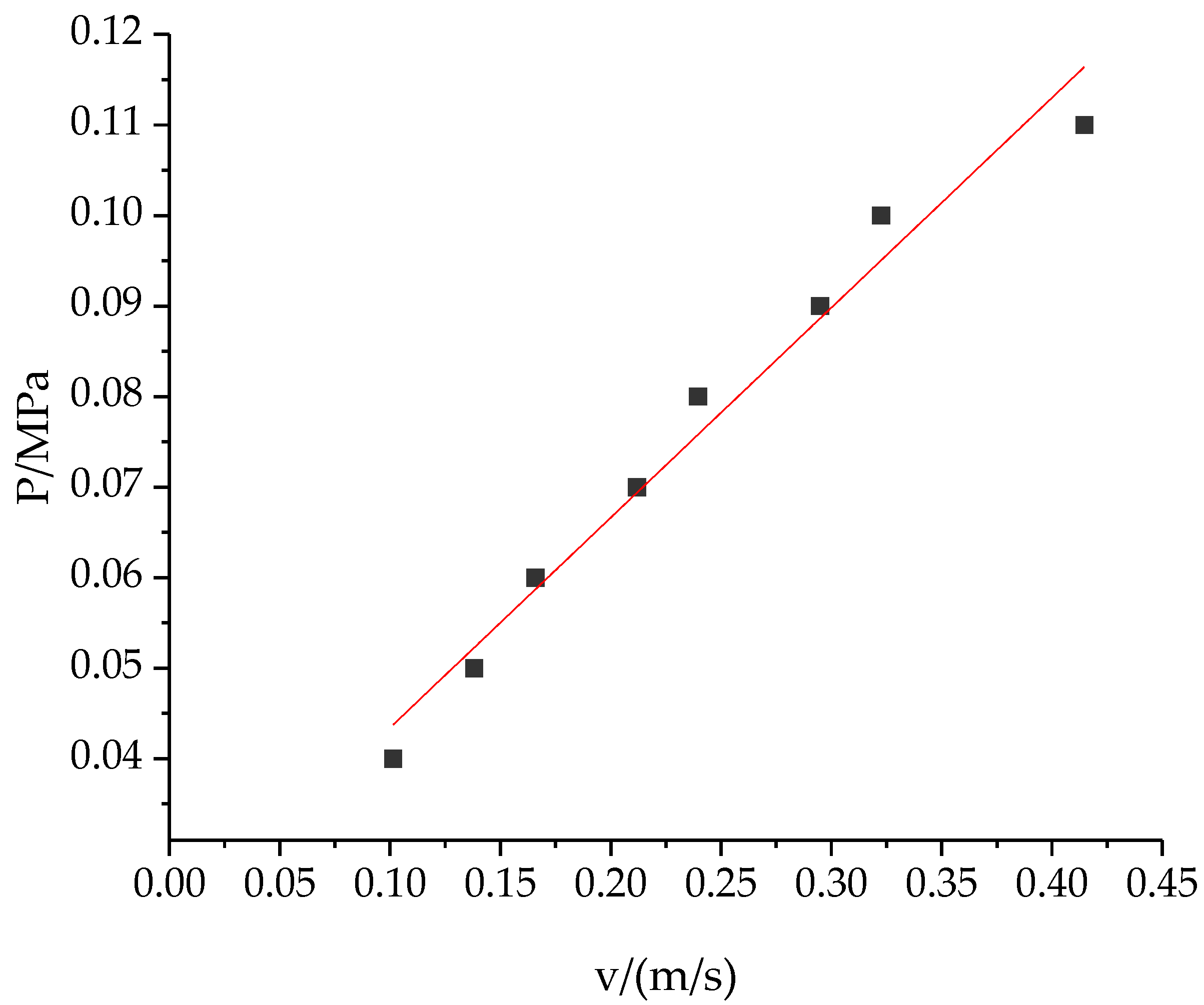

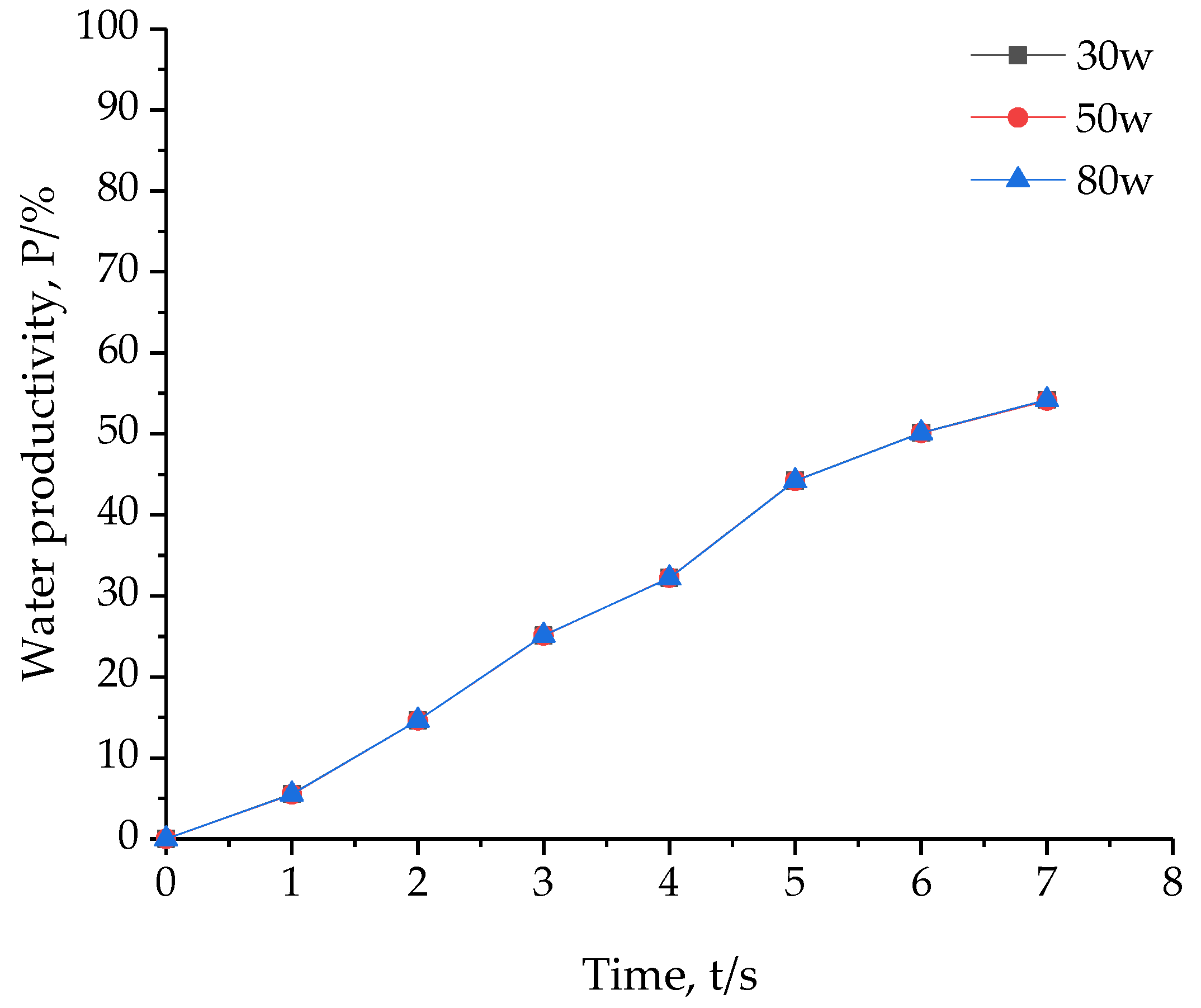
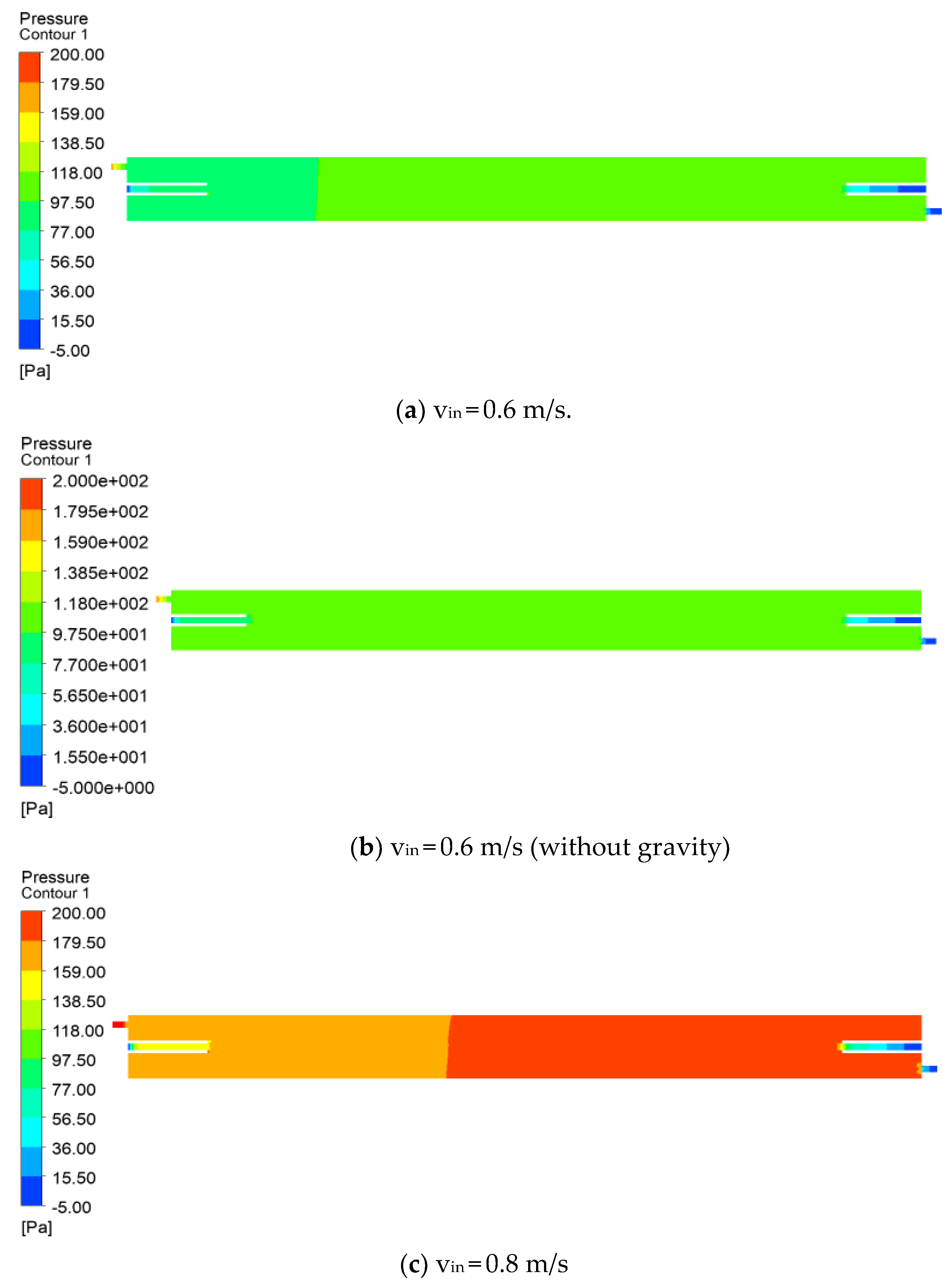
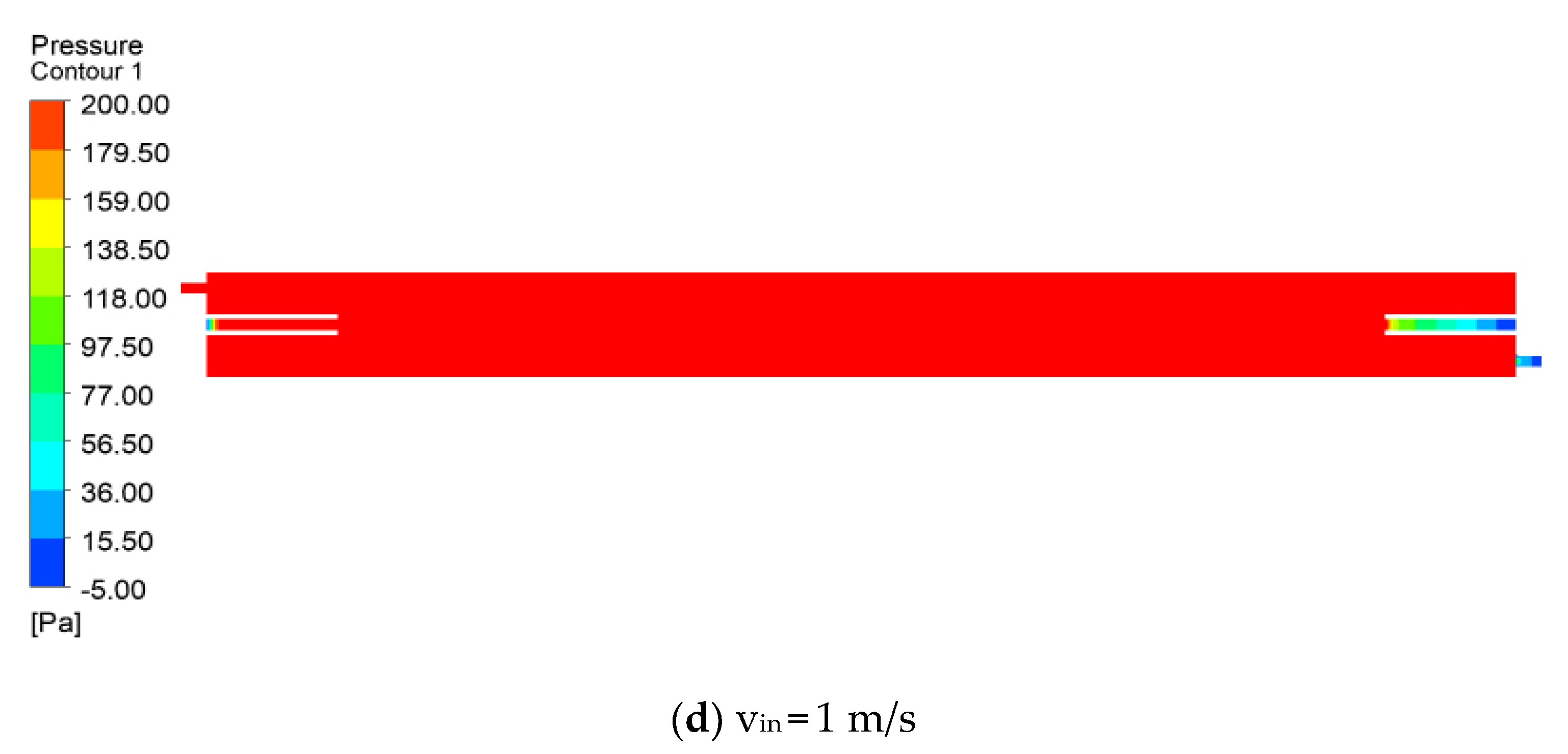
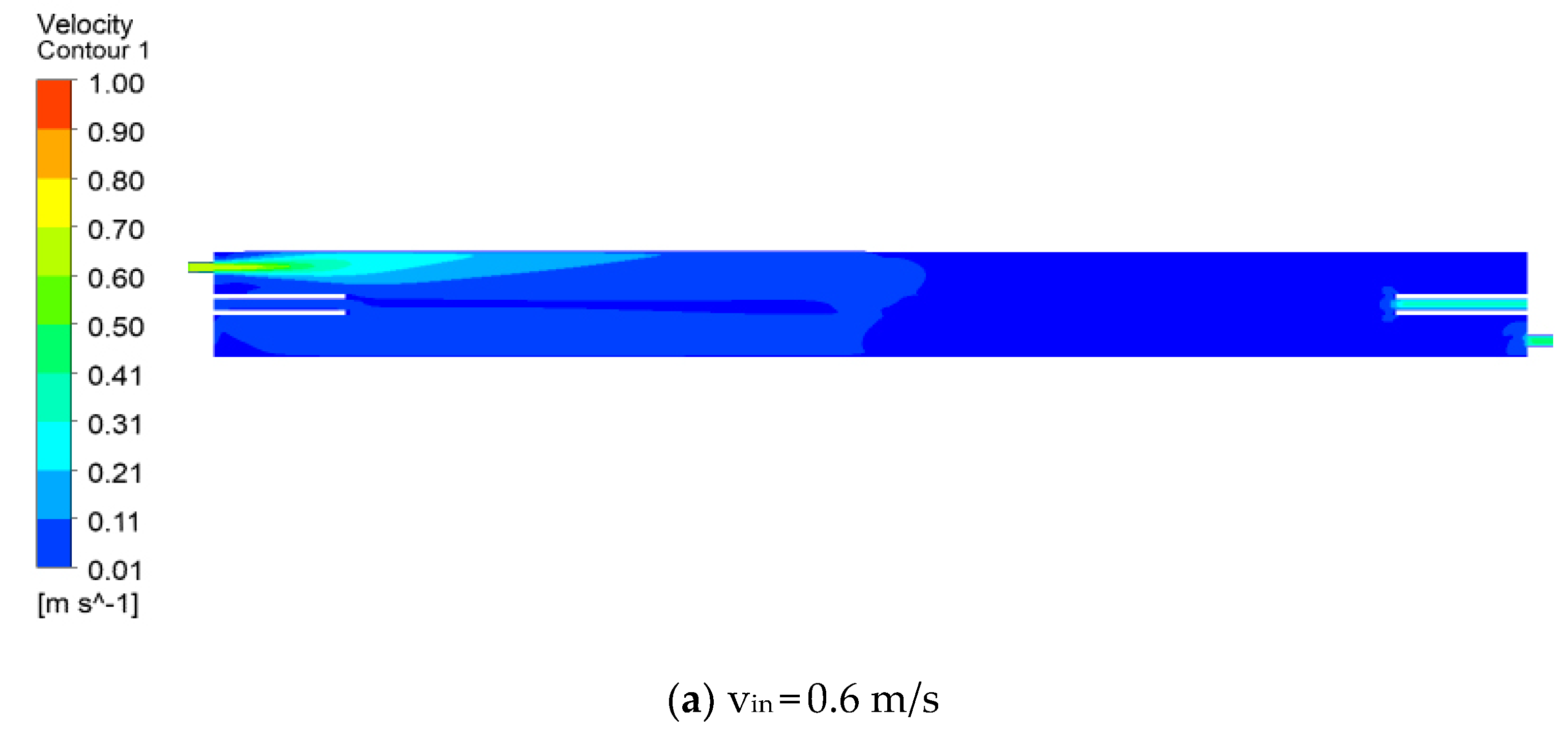


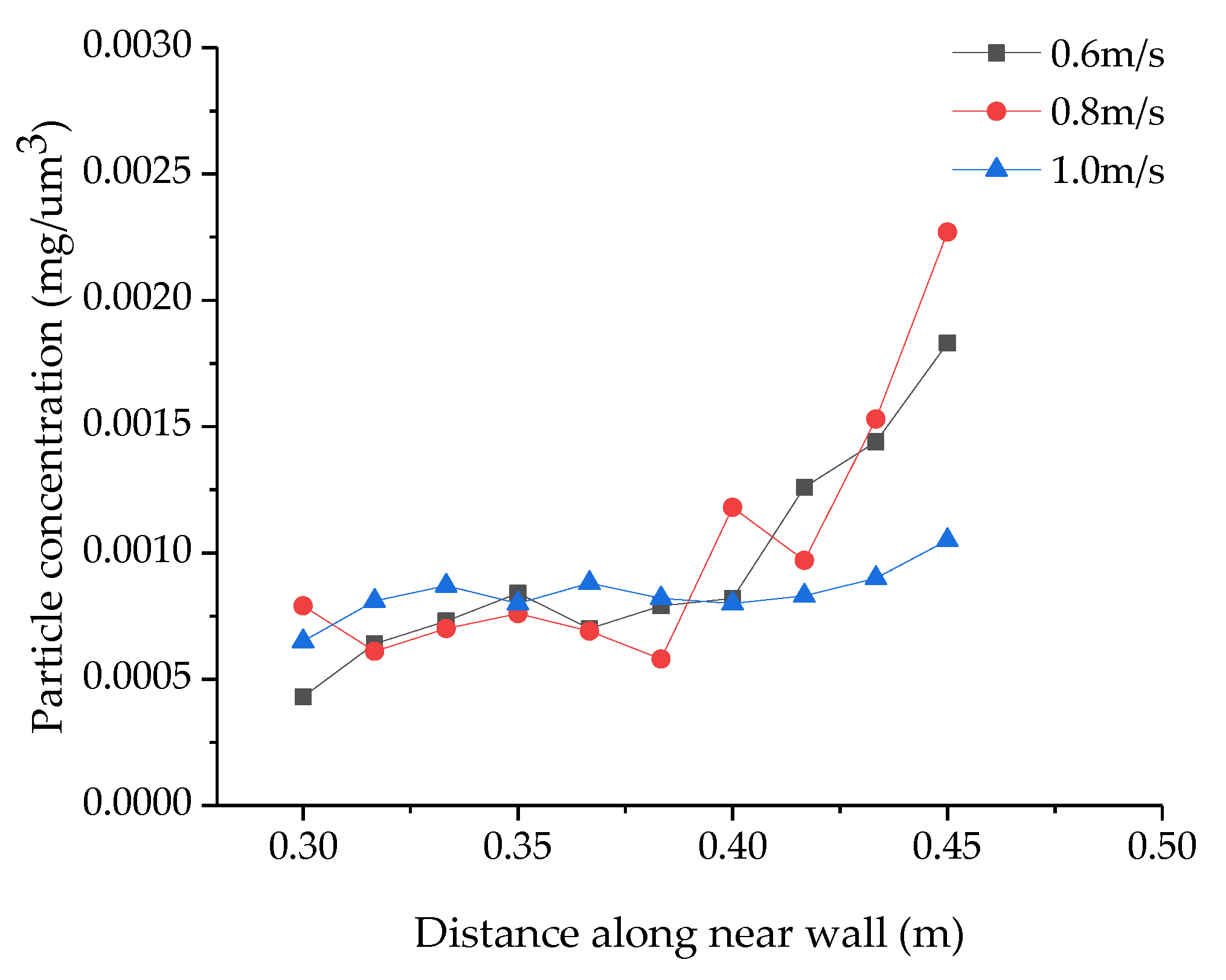
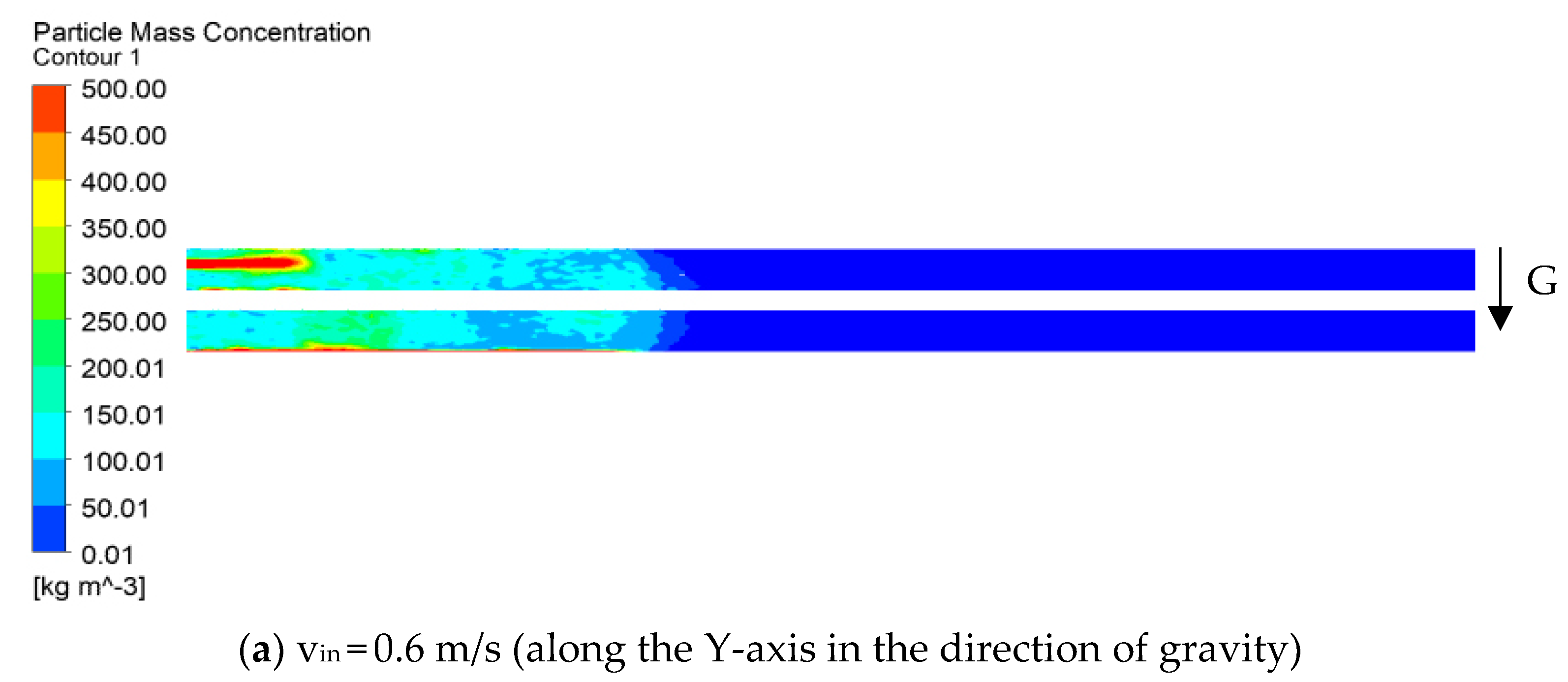
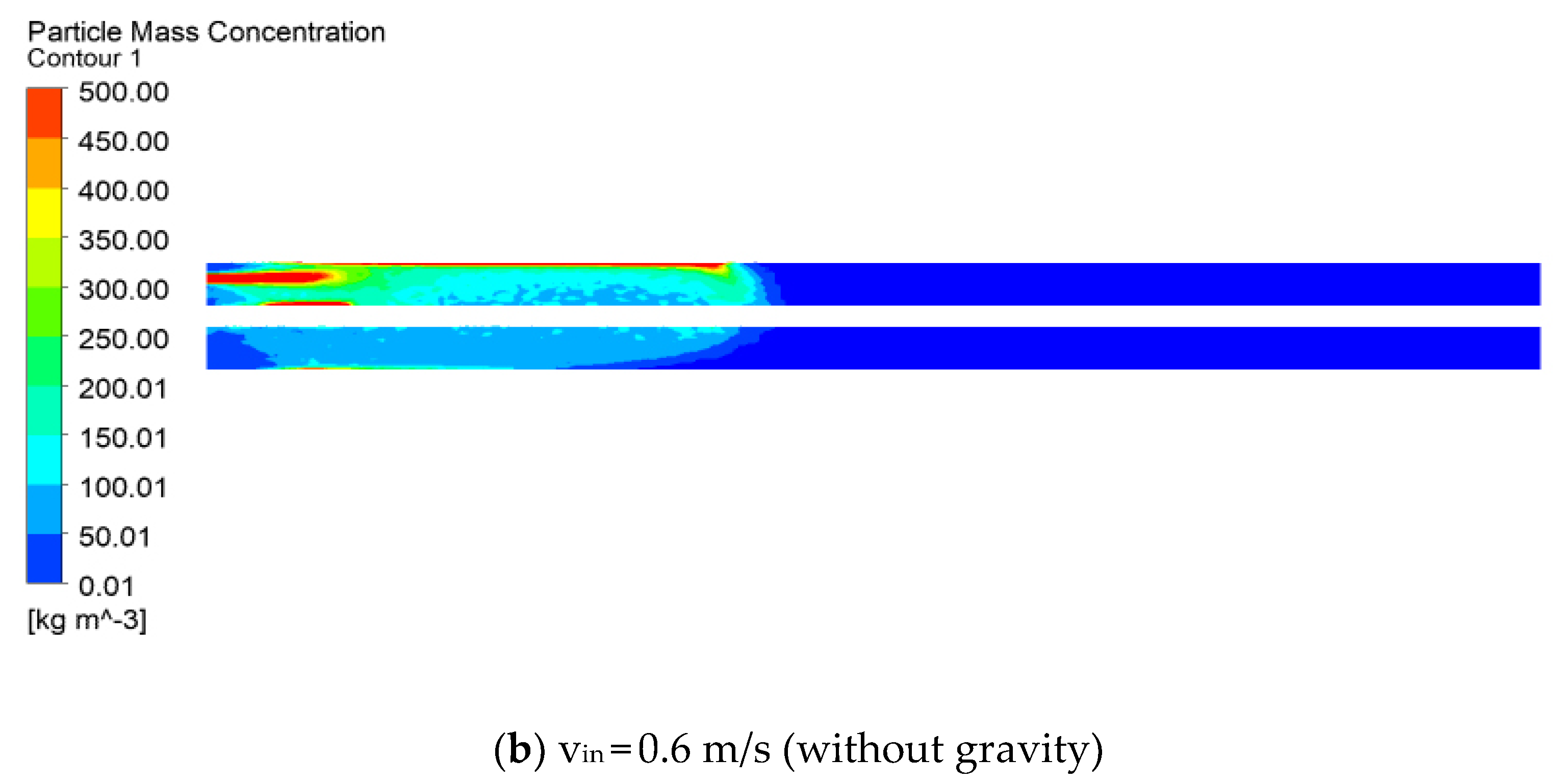
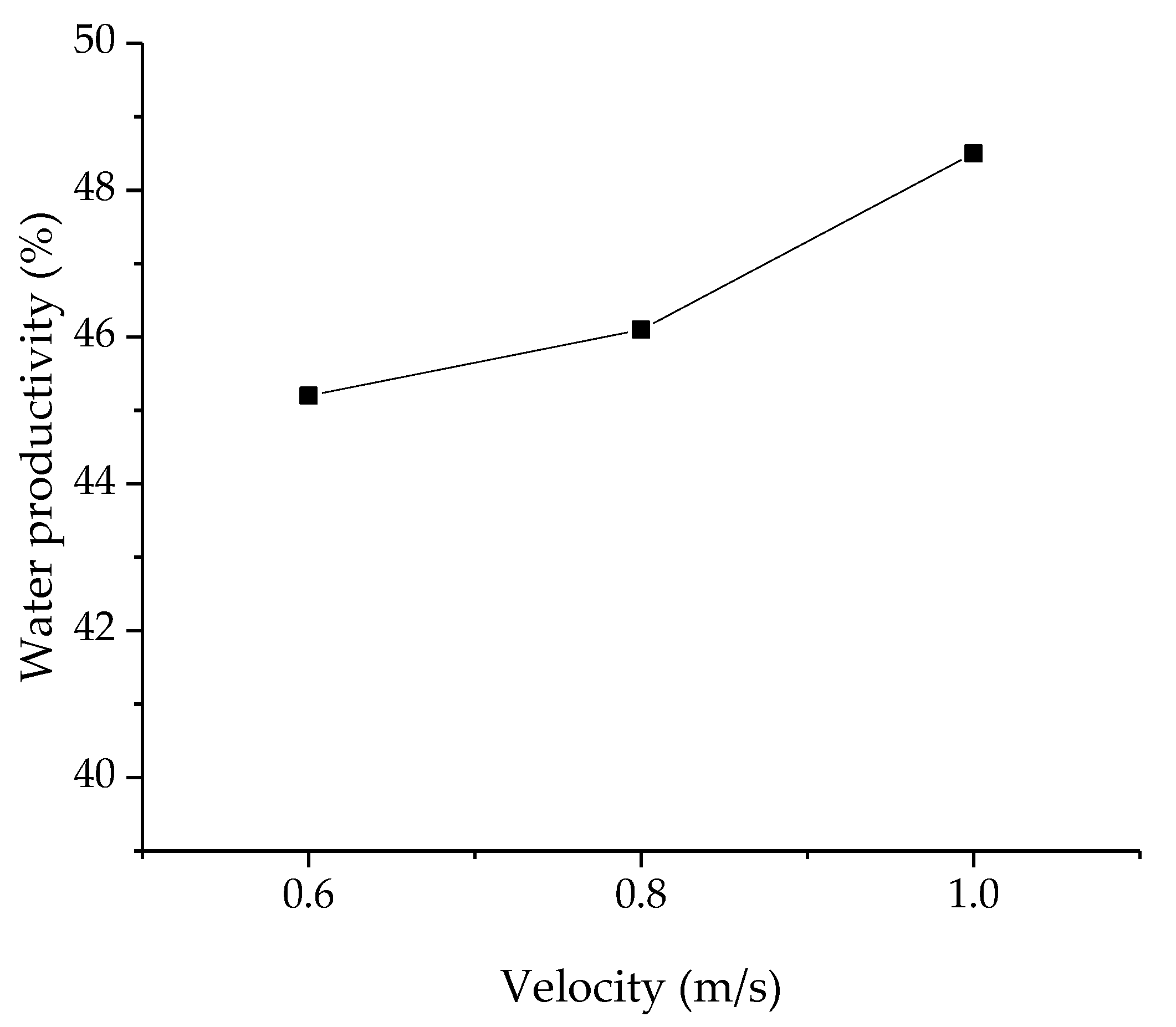
| P/MPa | Q/(mL/min) | v/(m/s) |
|---|---|---|
| 0.04 | 78.5 | 0.11 |
| 0.05 | 87.9 | 0.14 |
| 0.06 | 100.9 | 0.17 |
| 0.07 | 111.2 | 0.21 |
| 0.08 | 129.3 | 0.24 |
| 0.09 | 150.5 | 0.29 |
| 0.10 | 168.1 | 0.32 |
| 0.11 | 175.3 | 0.41 |
Publisher’s Note: MDPI stays neutral with regard to jurisdictional claims in published maps and institutional affiliations. |
© 2022 by the authors. Licensee MDPI, Basel, Switzerland. This article is an open access article distributed under the terms and conditions of the Creative Commons Attribution (CC BY) license (https://creativecommons.org/licenses/by/4.0/).
Share and Cite
Lin, P.; Wang, Q.; Xu, X.; Zhu, Z.; Ding, Q.; Cai, B. Research on the Influence of Inlet Velocity on Micron Particles Aggregation during Membrane Filtration. Appl. Sci. 2022, 12, 7869. https://doi.org/10.3390/app12157869
Lin P, Wang Q, Xu X, Zhu Z, Ding Q, Cai B. Research on the Influence of Inlet Velocity on Micron Particles Aggregation during Membrane Filtration. Applied Sciences. 2022; 12(15):7869. https://doi.org/10.3390/app12157869
Chicago/Turabian StyleLin, Peifeng, Qing Wang, Xiaojie Xu, Zuchao Zhu, Qiangmin Ding, and Biaohua Cai. 2022. "Research on the Influence of Inlet Velocity on Micron Particles Aggregation during Membrane Filtration" Applied Sciences 12, no. 15: 7869. https://doi.org/10.3390/app12157869
APA StyleLin, P., Wang, Q., Xu, X., Zhu, Z., Ding, Q., & Cai, B. (2022). Research on the Influence of Inlet Velocity on Micron Particles Aggregation during Membrane Filtration. Applied Sciences, 12(15), 7869. https://doi.org/10.3390/app12157869






